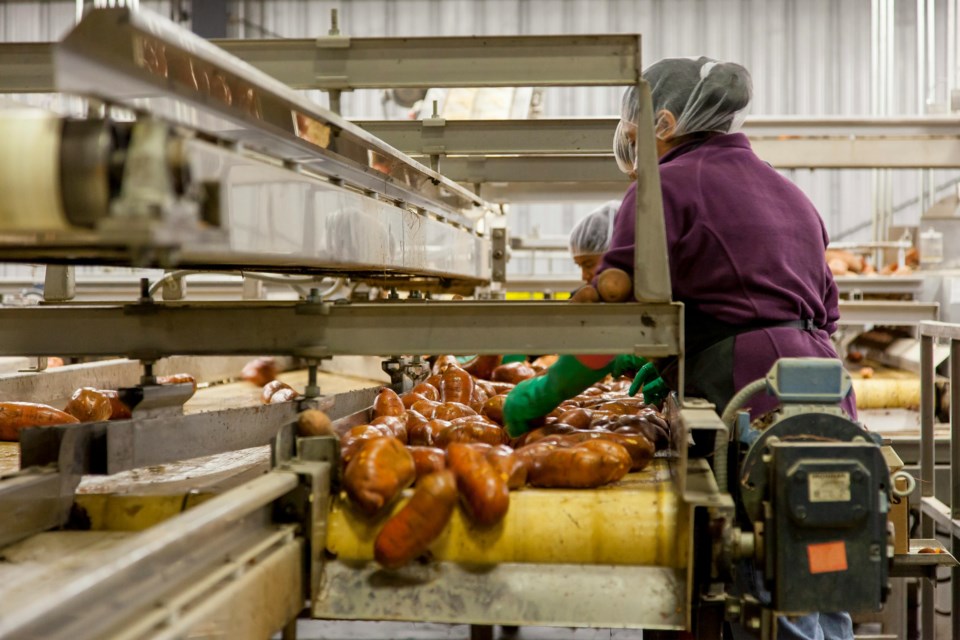The B.C. government is not recognizing the crisis in its food processing sector, simply because it has chosen not to. The province’s food and beverage industry stands at a critical juncture, facing substantial challenges that hinder its competitiveness and threaten its long-term sustainability. According to BC Food & Beverage’s recent State of the Industry Report 2024, the sector is grappling with rising costs, squeezed profit margins and inadequate infrastructure. These issues demand immediate attention and strategic interventions to ensure the industry continues to thrive and contribute significantly to the provincial economy.
The B.C. food and beverage sector is a crucial economic driver, generating $14.2 billion in annual revenues and employing more than 39,000 individuals in the province. Food processing is the key node within the food supply chain, connecting farmers to the market and consumers.
However, the industry’s growth and profitability have been stifled by a confluence of factors. The report highlights that any revenue growth in recent years has predominantly stemmed from business expansion and new product introductions rather than price increases, which have been challenging to secure from grocery retailers. Simply put, food processors are subject to more supply chain “bullying” by grocers than ever before. This inability to adjust prices in response to rising costs has eroded gross margins, particularly for small and medium-sized businesses, which have seen their profitability decline more sharply than larger manufacturers. Smaller processors, which include many family businesses, are financially suffocating.
Key challenges identified include the rising cost of inputs, labour and transportation, exacerbated by an inability to pass these costs on to retailers. Smaller manufacturers are disproportionately affected due to their limited bargaining power and financial resources. The report reveals that small and medium-sized manufacturers are achieving negative profit margins, in stark contrast to the modest profit margins of retailers. This discrepancy underscores the urgent need for measures to support these manufacturers in maintaining their operations and competitiveness.
One of the most pressing issues is the lack of affordable and suitable manufacturing space and land. Greater Vancouver, a hub for food and beverage manufacturing, is experiencing a critical shortage of industrial land, driving up costs and forcing some manufacturers to relocate to Alberta and Washington state. This trend not only threatens the local economy but also exacerbates food insecurity by disrupting the supply chain. Seeing food processors leave the province or even the country will make the B.C.’s food supply chain more vulnerable.
Think of the food economy as a large, thriving tree with a strong trunk and lush canopy. The tree represents the visible aspects of the economy: Businesses, products, jobs and economic growth. Roots are to the tree what food processing is to the agri-food economy. Roots are hidden but essential for the tree’s survival and growth. Food processors operate out of sight, yet they are critical to the food economy’s health, growth and stability.
The report provides several recommendations. First, developing a comprehensive competitiveness strategy for the industry is essential. This strategy should include an inventory classification of Agricultural Land Reserve land to identify areas that can be reclassified for manufacturing use and incentives for landowners to prioritize food and beverage manufacturing. This is the report’s most important recommendation. Additionally, increasing funding for infrastructure upgrades and manufacturing technology is crucial to help manufacturers control costs and improve efficiency.
Addressing labour shortages and upskilling the workforce is another critical area. The provincial government should develop targeted funding programs to attract, retain and upskill labour, particularly skilled workers.
Furthermore, the imbalance between grocery retailers and food manufacturers must be rectified. Advocating for the implementation of the Grocery Code of Conduct and supporting the Competition Bureau’s recommendation to attract more grocery competition are vital steps to ensure fairer pricing practices.
The B.C. food and beverage industry is at a crossroads, and the decisions made today will shape its future. By addressing identified challenges through strategic investments and supportive policies, the industry can overcome current obstacles, enhance its competitiveness and continue to be a vital contributor to the B.C. economy. However, if the province continues to ignore these issues, it risks the collapse of the roots holding its agri-food sector together.
Sylvain Charlebois is director of the Agri-Food Analytics Lab at Dalhousie University.



